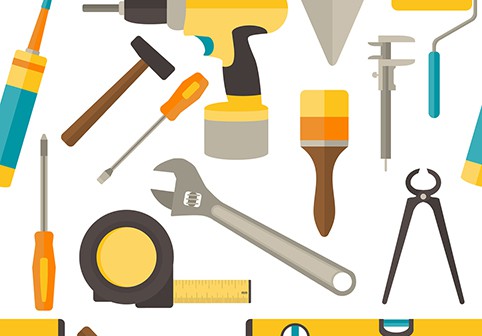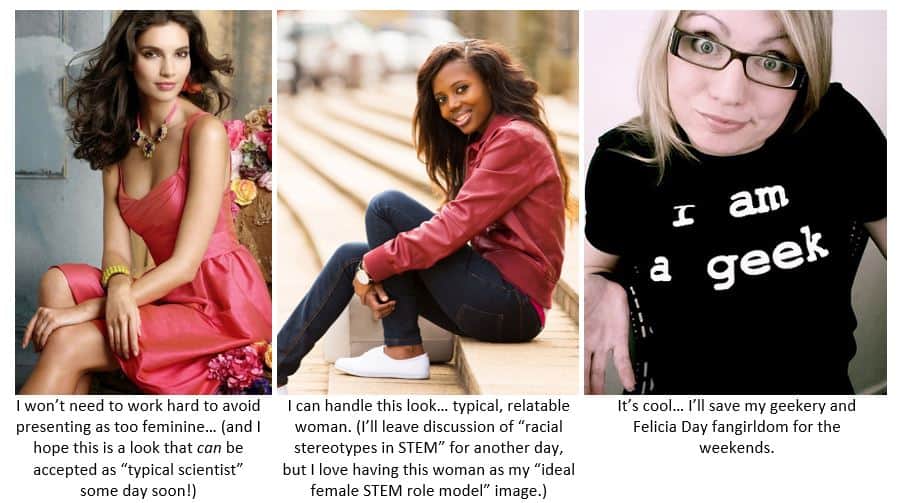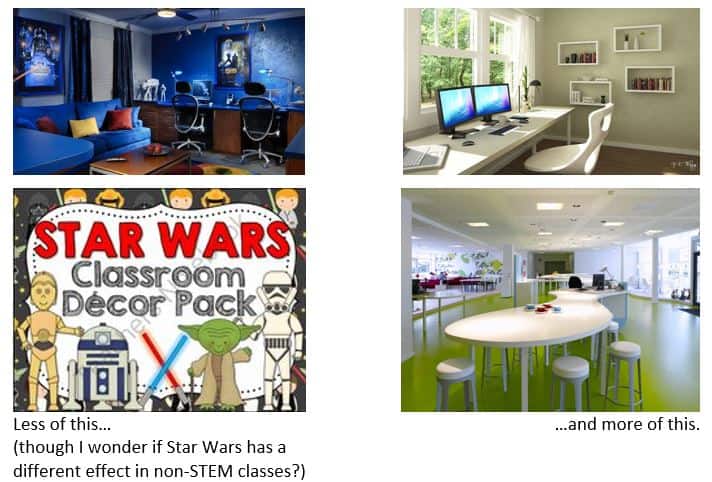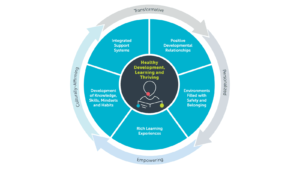Applying Psychology and Learning Sciences Research to Developing a Makerspace

As a female middle school STEM teacher, leveling the playing field among my boys and my girls in both their love of science and their beliefs about their potential success as scientists has always been one of my highest priorities and one of my biggest anxiety-inducers. Now, while developing a school-wide makerspace for every preschool-through-8th-grade child in my school, I feel a great responsibility to create both a physical space and a program that is welcoming and encouraging for all students.
Coming from my roots in molecular biology research and learning sciences research, I of course turned to the scientific literature as I crafted my plan (in addition to my extensive visits to existing makerspaces). Following are some of my plans followed by the research supporting each plan.
1. Present myself as a typical, relatable woman, not too feminine and “perfect,” but not too geeky and stereotypically sciencey (“not too geeky” being the tougher end of that scale for me personally).
In their 2011 paper Do Female and Male Role Models Who Embody STEM Stereotypes Hinder Women’s Anticipated Success in STEM?, Cheryan et al showed that female college students had lower beliefs about their potential success as computer scientists after interacting with computer science majors with “stereotypical” computer science attributes, like loving Star Wars and wearing geeky t-shirts. However, there was no decrease in belief in their own potential success after interacting with computer science majors with more typical college student attributes, like enjoying sports and music and wearing more generic clothing. Interacting with the non-stereotypical computer science major did not *increase* success beliefs over a baseline comparison, however.
In her 2013 doctoral dissertation, Diana Betz tackled the question of whether feminine STEM role models present an unattainable ideal and therefore demotivate middle school girls in pursuing STEM. Betz showed that middle school girls who read an article featuring a STEM woman dressed in pink in a fashionably decorated room reported decreased self-perception and future plans to study STEM fields, whereas middle school girls who read nearly the same article but featuring a STEM woman dressed in more typical clothes and in a more neutrally-decorated room did not decrease that self-perception. Betz’s analysis focuses on the “unattainable ideal” as a central factor in the negative effects of the highly feminine role models compared to “everyday” female STEM role models.
As this feels like it would almost oppose Cheryan et al, I think both studies are really looking at how extremes impact perception as compared to middle-of-the-road relatable role models… Cheryan et all showed that role models who are most similar to the target audience don’t decrease success beliefs, and Betz shows that role models who are the most neutral don’t decrease the same beliefs (although Betz DOES specifically reference Cheryan et al, pointing out that the girls themselves see the different STEM role models as equally similar to themselves).
In another study lead by Allison Master, a post-doc working with Dr. Cheryan, they found that simply having a female computer science teacher very positively mediated negative effects of stereotype threat. So perhaps my presence itself – regardless of my presentation – will at least reduce stereotype threat among my girls.
All of these together tell me that, as a female STEM teacher, I can probably be most effective presenting myself as neutrally as possible.
2. Decorate our makerspace neutrally, including plants and non-geeky art.
In their 2009 paper Ambient belonging: How stereotypical cues impact gender participation in computer science, Cheryan et al evaluated interest in computer science among college-aged men and women when visiting an office decorated according to stereotypical computer science expectations (Star Trek and empty soda cans, in this case) compared to a similar group visiting an office decorated more neutrally, with nature posters and general interest reading material. They found that among men there was no difference in reported computer science interest between visitors to the two offices. However, women visiting the neutrally-decorated room claimed significantly greater interest in computer science than women visiting the geeky room! These results persisted among women in a second experiment comparing stereotypical and neutral environments even when those environments were populated with other women.
In their report, Cheryan et al discuss “ambient belonging,” or the idea that people feel they will fit in with a group if the group’s physical space feels welcoming. Cheryan et al calls ambient belonging “a feeling of fit in with the environment and similarity to the people imagined to occupy it.”
Cheryan et al mostly discusses potential impacts of their results for tech companies hoping to attract a diverse workforce, but these findings also have huge implications for learning environments! In order for girls throughout my school to feel a sense of “ambient belonging” in our makerspace, I need to ensure that the characteristics of the environment are neutral and not geeky-stereotypical. Allison Master has a paper still under review conducting a similar experiment among high school classrooms.
3. Maintain a clean, sparse decoration and display strategy, including clear bins for storing construction and physical computing materials.
Fisher et al published Visual Environment, Attention Allocation, and Learning in Young Children: When Too Much of a Good Thing May Be Bad in 2014, and it received some significant attention among educators. In their laboratory classroom, they found that a highly decorated classroom provided distraction to their kindergarten students, and that distraction was enough to result in test score differences from a group of students taught in a sparsely decorated classroom. Although other researchers like Kana Imuta and Damian Scarf have responded hypothesizing that the results may have been due more to novelty of the decoration than to just the quantity of decorations, the results seem clear enough to me to support keeping our makerspace unfettered by much extra decoration beyond our construction materials.
A corollary to “sparse decoration” that I’m proposing is “clear storage.” I don’t have research to support this aspect of my plan, but I feel strongly that it will have a positive effect… I hypothesize that using white, clear, or other neutrally-colored storage systems will support students in focusing on the materials available for their creative construction, rather than noticing (and being distracted by) the storage system itself. For example, a white metal shelf stacked with clear, labeled bins will reveal the colorful straws, bottlecaps, LEDs, copper tape, servos, MaKey MaKeys, and other construction and physical computing materials inside of them. Ping me if you’re a psychologist or learning scientist and would like to test this hypothesis with me!
4. Ensure that furniture is height-adjustable.
I didn’t need to find research to clarify that height-adjustable furniture will be key for our space… Because my students will range from 3 years old through 14 years old, I have been sourcing both tables and stools that can be easily raised and lowered to accommodate taller and shorter children.
Probably my biggest takeaway from all of this research is that I desperately want Dr. Sapna Cheryan to be my friend… Luckily, she’s in Seattle too at the University of Washington! I’d love for her to visit our space as development progresses.
But my second takeaway is that I can begin to apply the findings from this research to designing the physical space and learning program for our new makerspace, and designing my own presentation as a STEM teacher, to best draw the full spectrum of our students into the tinkering, exploration, and engineering all that our makerspace affords. Stay tuned as reports start to roll in!
A little closer… Next is lighting and bus ducts. Kids pour in on Sept 9! #makerED #makerspace #dtk12chat #isedchat pic.twitter.com/Wtu2T1GhxW
— Lindsey Own (@LindseyOwn) August 14, 2015
For more blogs by Lindsey, check out:










0 Comments
Leave a Comment
Your email address will not be published. All fields are required.